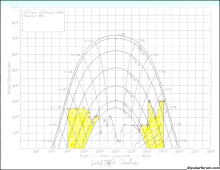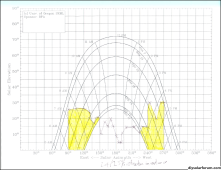Looking for bypass setup advice, is what I need possible?
Disconnect & Bypass setup:
1. 200A fusable disconnect by electric meter
2. Grid bypass, AC power direct to load panel (inverter maintenance)
2. Generator bypass, AC power direct to load panel (grid down)
3. Inverter to load panel, normal setup (controlling solar, battery, grid, generator power sources)
Homeowner doing reasearch on the best solar array, inverter and battery combination for our home.
Planning a solar roof mount array (approx. 19kW) with either a Sol-Ark 15K-2P or EG4-18KPV inverter. Over time want to integrate with 2 or 3 EG4-14.3KWh ProPower Wallmount batteries or something similar that will fit into the garage wall space available.
The biggest design challenge is our allowing existing ground source WaterFurnace Series 7 geothermal system to work with 15kW of backup resistive strip heat during a grid down, (geothermal compressor down) emergency situation. Power being supplied via the existing 20kW whole home generator.
With the Sol-Ark or EG4-18KPV, the built-in inverter bypass (for grid & generator) would not work if the inverter is down (switched off, updating or needing repair) leaving us without heat if the grid is down. A manual generator bypass would allow powering the 15kW resistive strip heat directly from the generator to the load panel. This generator bypass would have to cut out the inverter from controlling the bypass function.
Additionally, the Sol-Ark inverter's max 12kW output on battery or 15kW output on battery + PV would be overloaded, causing a trip if powering 15KW resistive heat. Even if it was possible (using parallel 15kW inverters) the battery size would need to be massive for the sustained draw. With one inverter, the only practical way to do this, I think is the generator to manually bypass the inverter.
Can a setup be wired this way?
Thanks for the advice.
Alastair
Disconnect & Bypass setup:
1. 200A fusable disconnect by electric meter
2. Grid bypass, AC power direct to load panel (inverter maintenance)
2. Generator bypass, AC power direct to load panel (grid down)
3. Inverter to load panel, normal setup (controlling solar, battery, grid, generator power sources)
Homeowner doing reasearch on the best solar array, inverter and battery combination for our home.
Planning a solar roof mount array (approx. 19kW) with either a Sol-Ark 15K-2P or EG4-18KPV inverter. Over time want to integrate with 2 or 3 EG4-14.3KWh ProPower Wallmount batteries or something similar that will fit into the garage wall space available.
The biggest design challenge is our allowing existing ground source WaterFurnace Series 7 geothermal system to work with 15kW of backup resistive strip heat during a grid down, (geothermal compressor down) emergency situation. Power being supplied via the existing 20kW whole home generator.
With the Sol-Ark or EG4-18KPV, the built-in inverter bypass (for grid & generator) would not work if the inverter is down (switched off, updating or needing repair) leaving us without heat if the grid is down. A manual generator bypass would allow powering the 15kW resistive strip heat directly from the generator to the load panel. This generator bypass would have to cut out the inverter from controlling the bypass function.
Additionally, the Sol-Ark inverter's max 12kW output on battery or 15kW output on battery + PV would be overloaded, causing a trip if powering 15KW resistive heat. Even if it was possible (using parallel 15kW inverters) the battery size would need to be massive for the sustained draw. With one inverter, the only practical way to do this, I think is the generator to manually bypass the inverter.
Can a setup be wired this way?
Thanks for the advice.
Alastair






